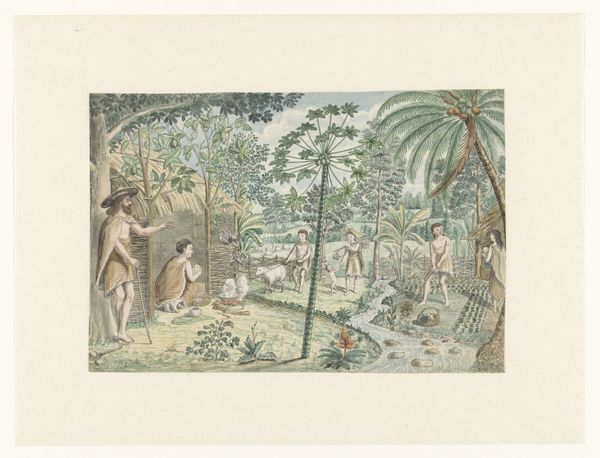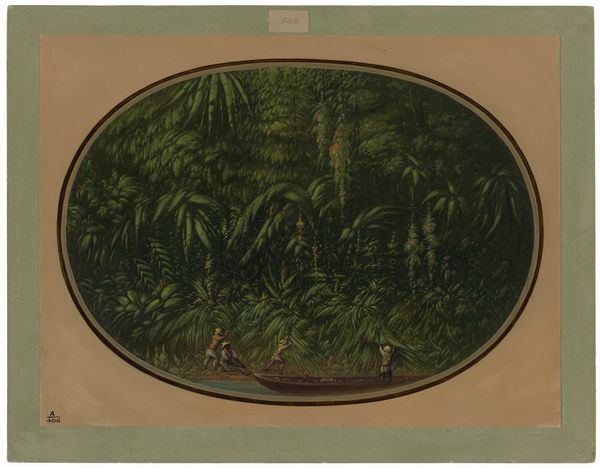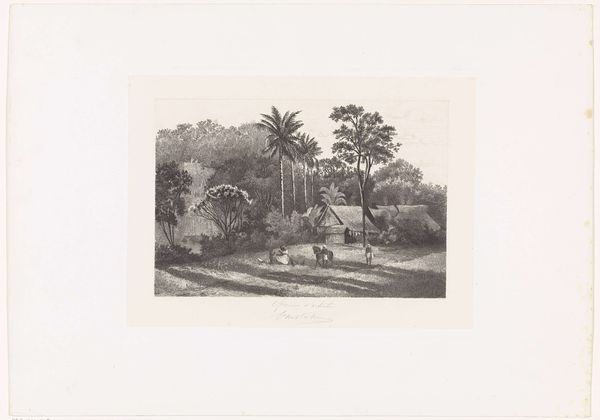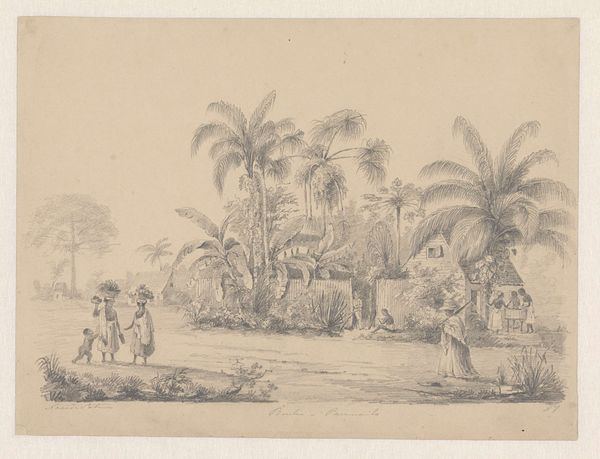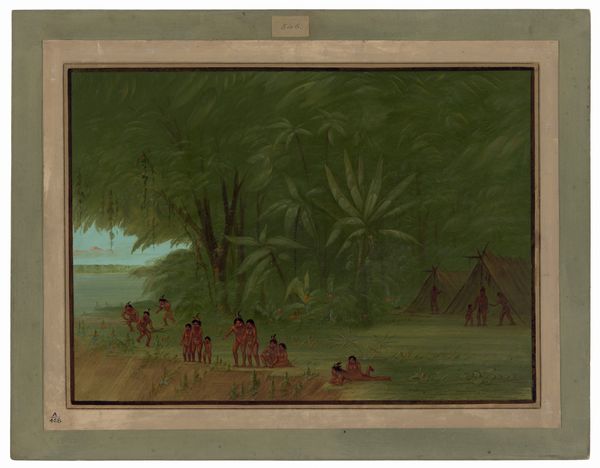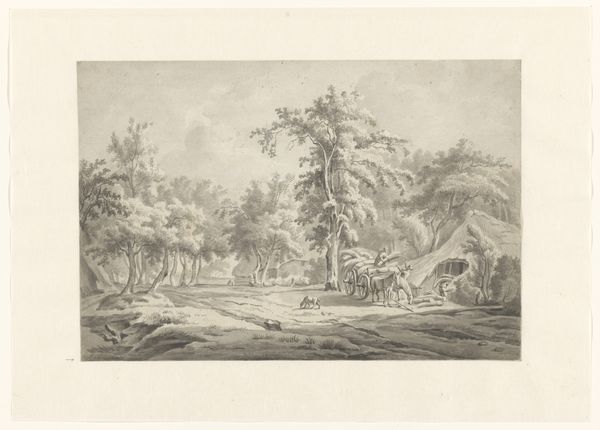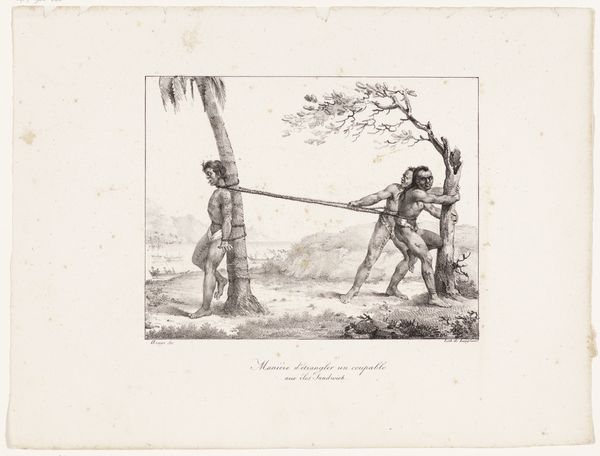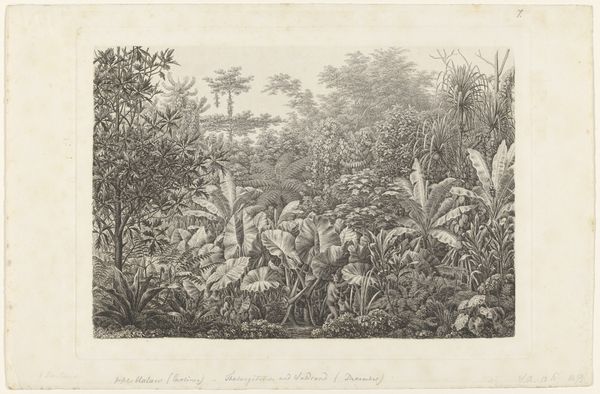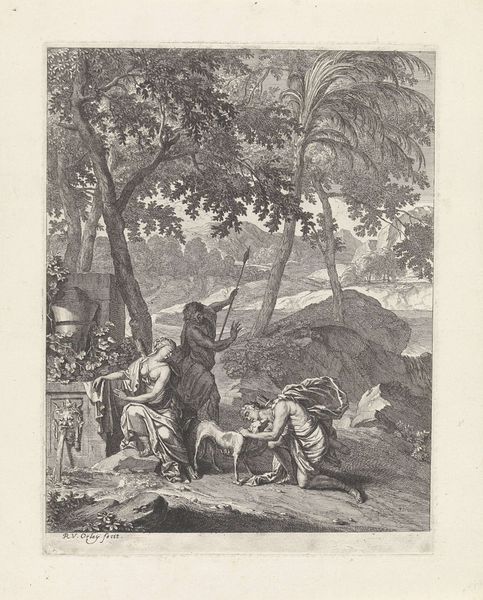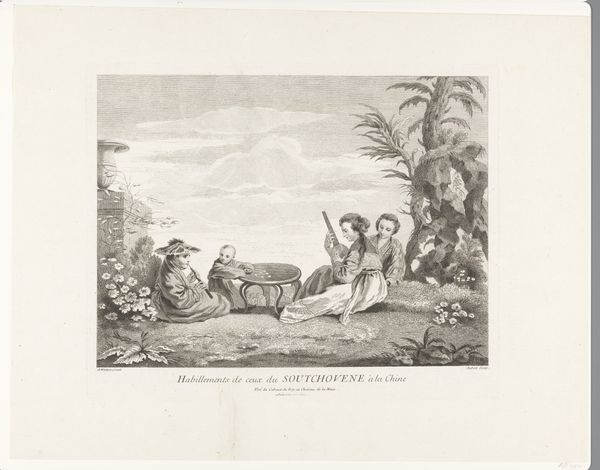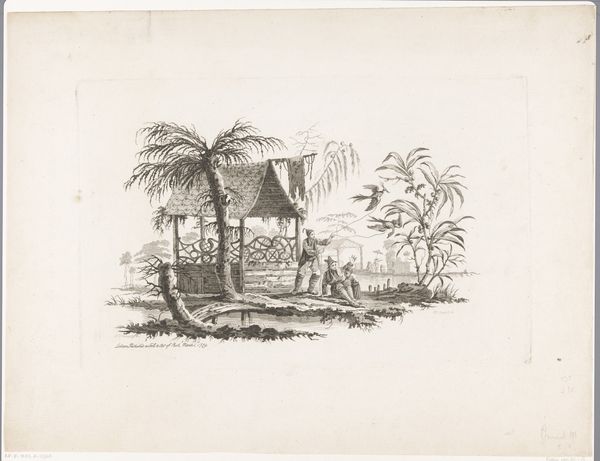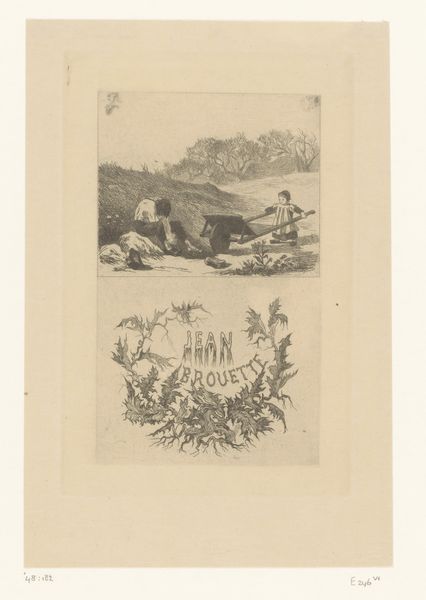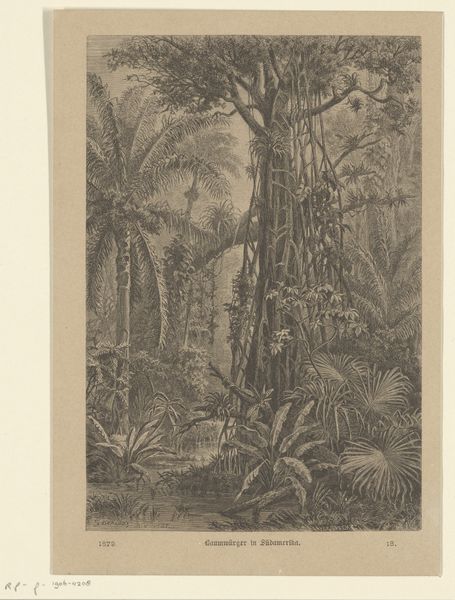
Dimensions: width 298 mm, width 600 mm
Copyright: Rijks Museum: Open Domain
Curator: This is "Adam and Eve in a Utopian Village Scene," a watercolor by Jan Brandes, created sometime between 1779 and 1785. Editor: It’s, uh...charming. The color palette is soft, and everything appears to be crafted so gently, even the thatch hut seems… cozy. Not exactly the stark exile I envisioned for Adam and Eve. Curator: Exactly! Brandes wasn’t going for traditional biblical interpretation. Look closely; he places the first couple within a Javanese landscape, complete with tropical vegetation, livestock, and architecture. He lived for several years in former Dutch colonies. Editor: So, a cultural translation then? It's fascinating to consider the material implications of portraying Eden with the resources and labor of 18th-century Java. That dwelling, for instance; what was involved in its making? Was it built by enslaved or coerced labor? Curator: Brandes' time in Asia definitely shaped his vision. He uses watercolor beautifully, creating depth and detail that elevate what could have been a simple genre scene into something far more intriguing. He blurs the lines between documentary and romantic ideal. The landscape feels real but also idyllic. It feels... lived in. Editor: I'm struck by how domestic it all is. Look at the sheep, the cow, the chickens wandering around. Even the dog looks content. Paradise reduced to a homestead? Curator: Perhaps Brandes is suggesting that paradise isn’t a specific place but a way of living, in harmony with nature and within a community. It's as though the artist were using biblical symbolism to envision new forms of material and social organization in Asia. Editor: The scale of it really underlines that feeling; a self-contained and seemingly sustainable little world conjured with paper and pigments. It almost has the feel of an anthropological field report; and I wonder what message this would send to Europeans viewing images such as this? Curator: Maybe it makes you wonder if he thought of a parallel story to the one told to children. Where did these people come from? He has an idea; the utopia starts right here. Editor: Right, a material and visual world both distinct from Europe. It prompts a certain questioning about what is normal. Curator: It is a deeply intriguing and beautiful scene. It makes you think!
Comments
No comments
Be the first to comment and join the conversation on the ultimate creative platform.
